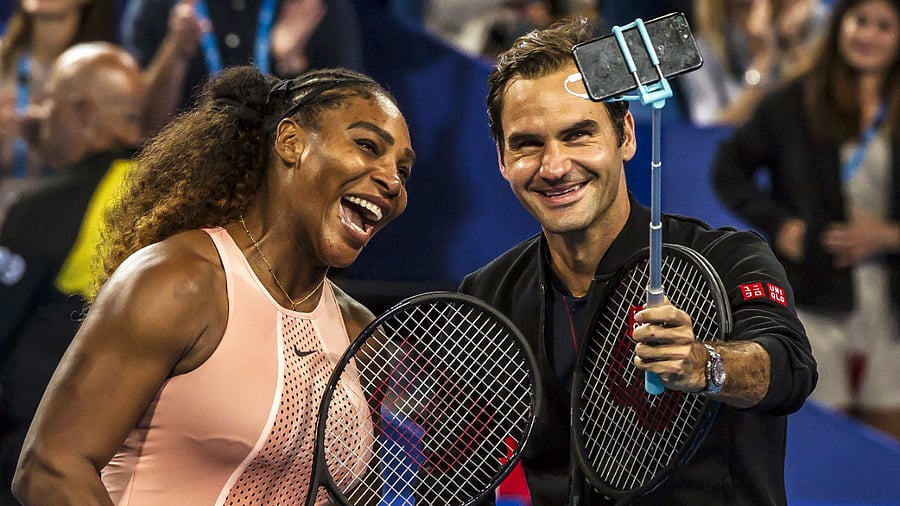
By Stephen L. Carter
With this week’s retirement of Roger Federer coming hard on the heels of last week’s news that Serena Williams had played her final match, encomia have rung out from every corner lamenting the loss of the two greatest tennis players in history.
But were they? In every sport, we constantly hear claims that this one or that one is the greatest who’s ever played the game. But despite efforts over the years to compare athletes across generations, we never know for sure. The fact that we can argue endlessly is part of what makes professional sports appealing -- and should also teach us humility in other arenas, where the outcome of argument matters more.
Nowadays, we tend to appeal to advanced analytics to help us settle disputes over sports. But the answer always turns on what question we ask.
Let’s start with tennis. In recent years, Serena has had no peers. Federer, on the other hand, has long engaged in a constant three-way competition with Novak Djokovic and Rafael Nadal.
Perhaps the best way to compare players who compete against each other in an individual sport is the Elo rating, a highly accurate predictive measure borrowed from chess. But the answer still depends on what question we ask. For instance, if we track Elo among men’s players over time, Nadal was almost always ahead of both Djokovic and Federer. Does that make him the best?
Maybe not. We can also use Elo to find out which player was best in his best years. By this measure, we learn that Djokovic had the best peak Elo of any player over the past half century, following his victory in the 2016 Australian Open. Is he then the best?
Again, maybe not. The use of peak Elo ratings turns out to upset our neat triumvirate, for we discover that in their best years, Bjorn Borg and John McEnroe both were stronger than either peak Nadal or peak Federer. Indeed, Borg might have a particular claim to the greatest-ever crown, having won almost 90% of the Grand Slams he entered and prevailing in 71.3% of his matches against players then ranked in the top 10. Both figures top the list.
Women’s tennis is similarly complicated. In 2015, fivethirtyeight.com created a furor when it ran a piece arguing that Williams was only the fourth best player ever as measured by peak Elo, trailing peak Steffi Graf, peak Martina Navratilova and peak Monica Seles.
On the other hand, the same data tell us that no women’s player has done as well in her thirties. Moreover, Elo ratings demonstrate Serena’s remarkable dominance over today’s players. For two decades, her Elo rating never dropped below 2300, and for most of that time it was near or over 2400. As of this writing, the top-ranked player in women’s tennis – Iga Swiatek - has a rating of 2201 and a peak of 2264. With Serena gone, only one player who’s still active has ever hit 2300, and that was almost a decade ago. As that same fivethirtyeight.com article put it, “[T]he tier below Williams has been in free fall.” If the measure of true greatness is that we’ll never see her the likes of her again, Serena probably winds hands down.
So again, what answer we get depends heavily on what question we ask.
Most of us rely on the eye test. The greatness that counts is the greatness we’ve seen. What Williams, Federer, Djokovic, and Nadal have in common – apart from all those major titles – is that their achievements are in recent memory. Recency bias tends to make all of us conservative when facing challenges to the evidence of our own eyes. We tend to pick as the “right” measure the one that supports our priors.
Consider the sportswriter Leonard Koppett’s classic essay from the 1960s “The Great Debate: Mays or Mantle?” At the time, baseball fans everywhere were arguing over whether Willie Mays or Mickey Mantle was the best player in the game. Koppett goes on for some time about the statistics that seem to give the advantage to Mickey. But he ends with this much-quoted line: “Willie, on the other hand, I can sum up very simply: he’s the best baseball player I ever saw.”
Having seen all the greats of that era, this era, and the eras that lie in between, I tend to agree. But maybe I’m wrong. Most of us tend to get conservative about our “eye” judgments – perhaps a better term is protective – and I guess that’s why I’m irritated whenever I look at, say, career OPS (on-base average plus slugging) and see Mantle in the top 15, whereas Mays, my hero and Koppett’s, is way down the list, below even Dan Brouthers, a player I’d bet that not one baseball fan in a thousand has ever heard of.
Similarly, although I grew up at a time when knowledgeable sports people were always saying that Bob Gibson was the finest pitcher they’d ever seen, by some of today’s popular analytics, he barely cracks the top 25; by others, he doesn’t even make the top 50. Those of who consider Gibson one of the all-time best aren’t necessarily wrong; we’re just out of step.
To return to tennis, I consider Serena the finest player I’ve ever seen, but I accept that others can see things differently. I do worry that I tend to like data that show I’m right. And that’s where arguments over sports have a lesson to teach us about politics, morality, and much else besides. If we can’t be certain when we have hard data, how can we be certain when we don’t? Maybe we’d all be better off if we were to concede more often that those with whom we disagree might have a point.